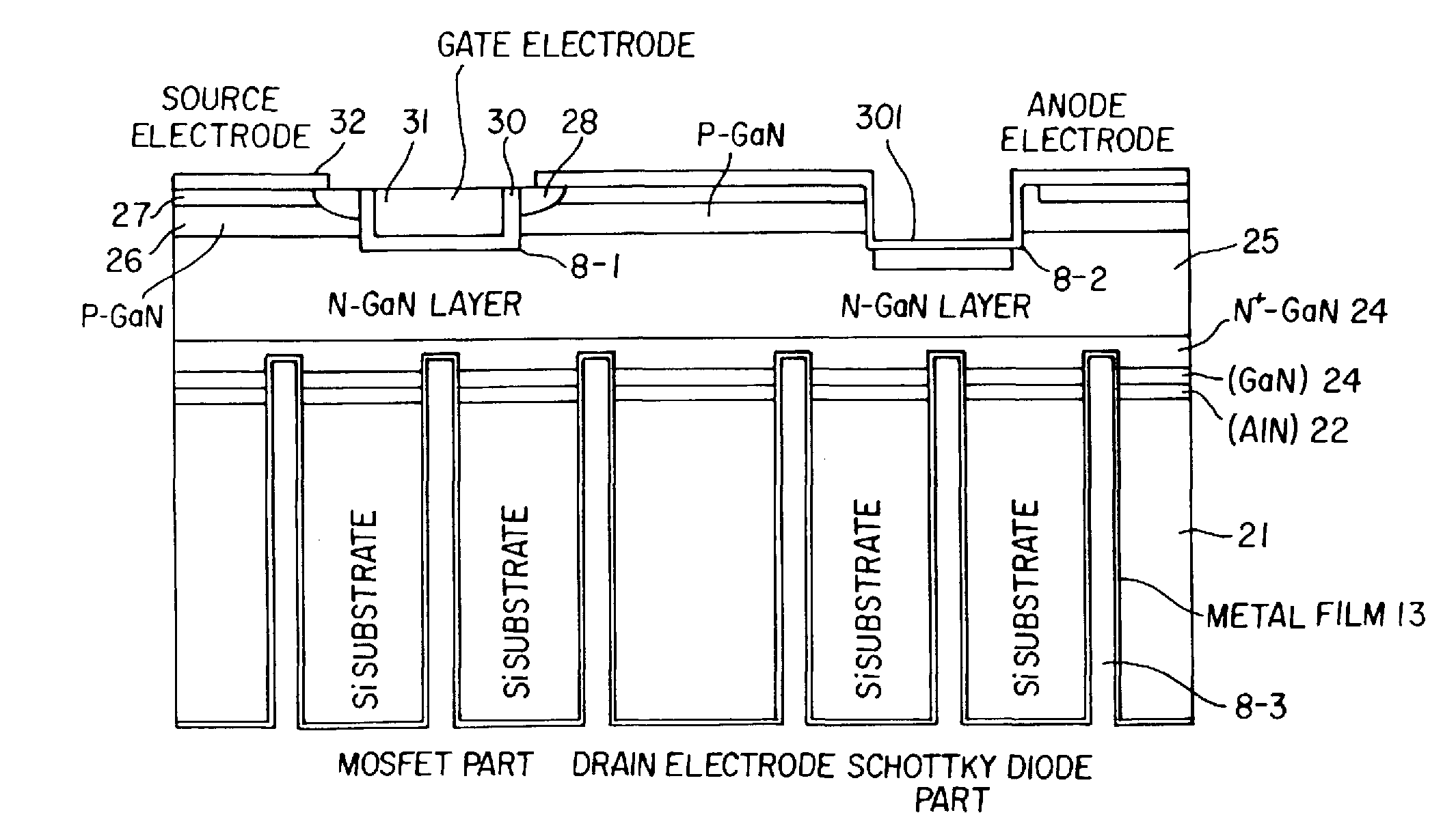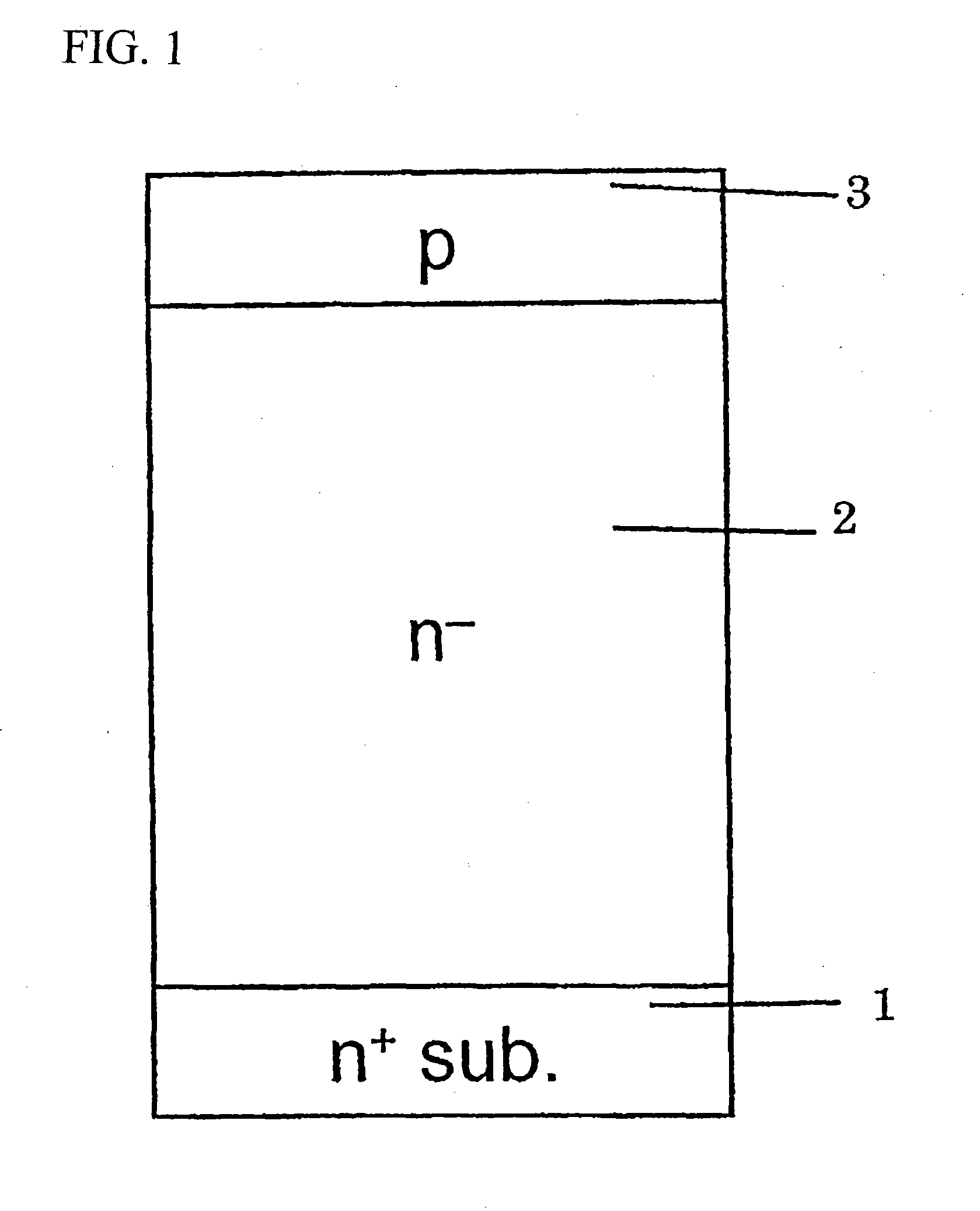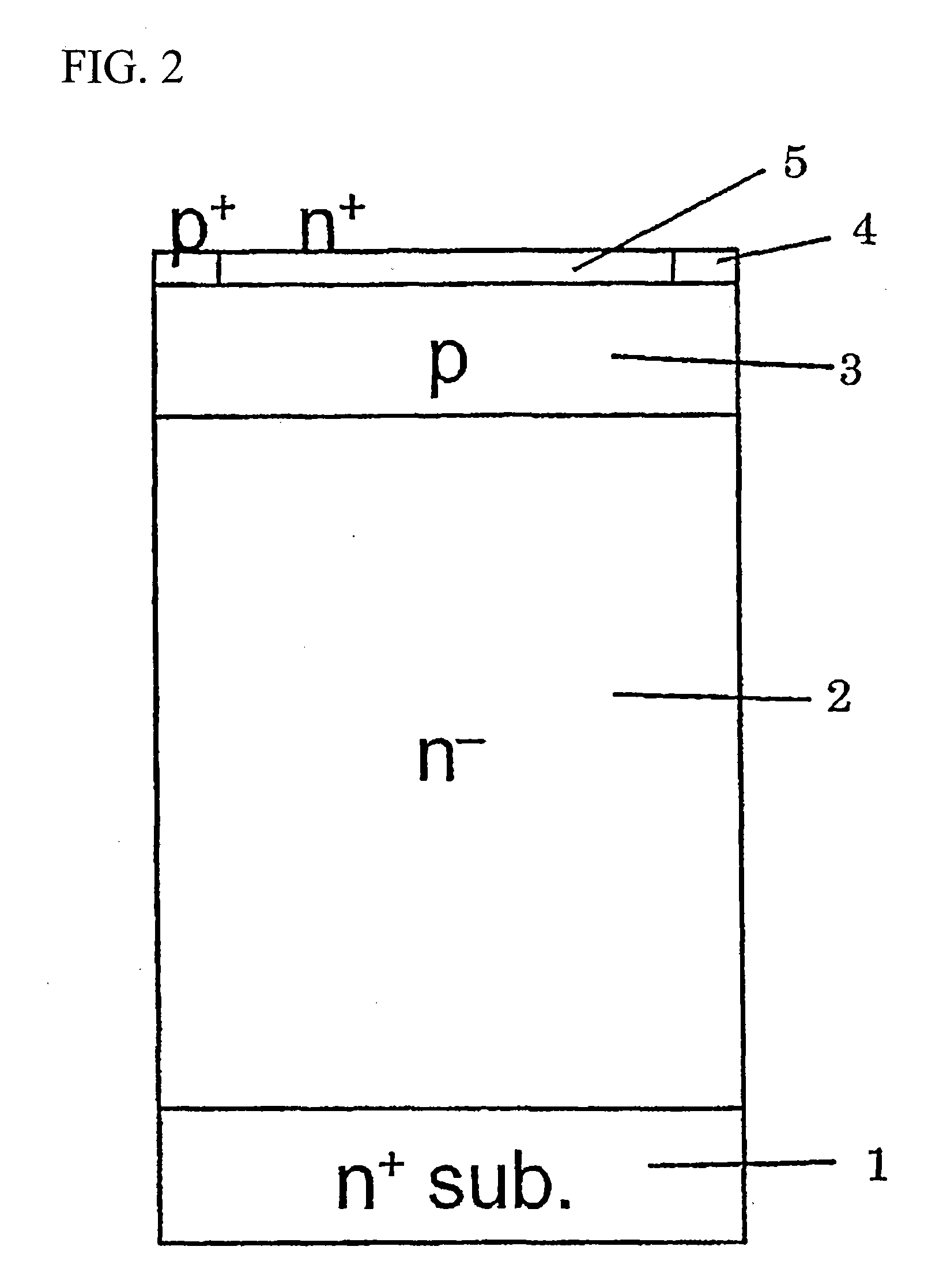Wide band gap semiconductor device and method for producing the same
a semiconductor device and wide band gap technology, applied in semiconductor devices, diodes, electrical equipment, etc., can solve the problems of complex circuit configuration, unsuitable for high-speed switching, cost increase, etc., and achieve the effect of improving avalanche breakdown tolerance at turning-off time, short reverse recovery time, and low resistan
- Summary
- Abstract
- Description
- Claims
- Application Information
AI Technical Summary
Benefits of technology
Problems solved by technology
Method used
Image
Examples
embodiment 1
[0086]Embodiment 1 of the invention will be described below with reference to FIGS. 1 to 5. In Embodiment 1, a trench MOSFET which exhibits a withstand voltage of 1200 V and which has an active region located in the center so that a main current flows in the active region, and a peripheral voltage withstanding structure region disposed to surround the active region is provided as a vertical trench gate MOS power semiconductor device. First, n-type SiC substrate 1 (referred to as “n+ sub.” in FIGS. 1 to 5) with a sufficiently high impurity concentration is prepared. In this embodiment, the SiC substrate contains about 2×1018 cm−3 of nitrogen as an impurity. N-type SiC drift layer 2 containing about 1.0×1016 cm−3 of nitrogen and p-type SiC base layer 3 containing about 2.1×1017 cm−3 of aluminum are epitaxially grown on SiC substrate 1 so that the thicknesses of layers 2 and 3 are about 10 μm and 2.5 μm respectively (FIG. 1). Incidentally, FIG. 1 shows neither the actual thicknesses of...
embodiment 2
[0130]A wide band gap semiconductor device according to Embodiment 2 of the invention, especially, a trench MOS device will be described below with reference to FIGS. 15 to 19. In Embodiment 2, a GaN trench MOSFET with a withstand voltage of 600 V is used as a vertical trench gate type MOS power semiconductor device. The point of difference from the GaN trench MOSFET according to Embodiment 1 is that an Si substrate is used as a semiconductor substrate with a high impurity concentration. First, as shown in FIG. 15, Si substrate 21 having (111) face as a principal surface is prepared as the Si substrate so that AlN layer 22 and non-doped GaN layer 23 as buffer layers on which GaN layers 24, 25 and 26 will be further grown are formed on Si substrate 21 by a metal organic chemical vapor deposition method (MOCVD) which is a commonly known technique. Because the grating constant of the Si (111) face is 0.3840 nm and the grating constant of GaN is 0.3819 nm which is a value relatively nea...
embodiment 3
[0140]Embodiment 3 of the invention will be described below with reference to FIGS. 20 to 24. Incidentally, in Embodiment 3, an SiC p-channel type trench MOSFET with a withstand voltage of 1200 V is provided as a vertical trench gate MOS power semiconductor device. First, n-type SiC substrate 41 is prepared. In this embodiment, SiC substrate 41 is provided as a high-resistance n-type SiC substrate containing about 2×1014 cm−3 of nitrogen as an impurity. P-type SiC layer 42 containing about 1.0×1019 cm−3 of nitrogen and p-type SiC drift layer 43 containing about 1.0×1016 cm−3 of nitrogen are epitaxially grown on SiC substrate 41 so that the thicknesses of layers 42 and 43 are about 2 μm and 10 μm respectively. N-type SiC base layer 44 containing about 2.1×1017 cm−3 of nitrogen is epitaxially grown on p-type SiC drift layer 43 so that the thickness of layer 44 is 2.5 μm (FIG. 20). N+ contact region 45 (FIG. 21) and p+ source region 46 (FIG. 22) are formed by selective ion implantation...
PUM
 Login to View More
Login to View More Abstract
Description
Claims
Application Information
 Login to View More
Login to View More - R&D
- Intellectual Property
- Life Sciences
- Materials
- Tech Scout
- Unparalleled Data Quality
- Higher Quality Content
- 60% Fewer Hallucinations
Browse by: Latest US Patents, China's latest patents, Technical Efficacy Thesaurus, Application Domain, Technology Topic, Popular Technical Reports.
© 2025 PatSnap. All rights reserved.Legal|Privacy policy|Modern Slavery Act Transparency Statement|Sitemap|About US| Contact US: help@patsnap.com



